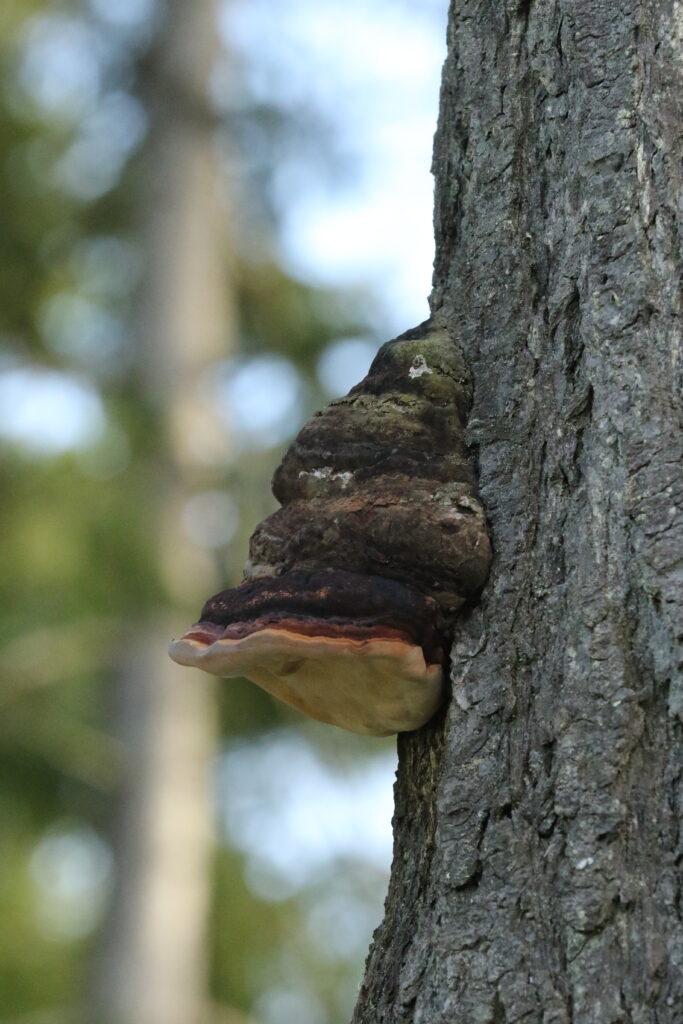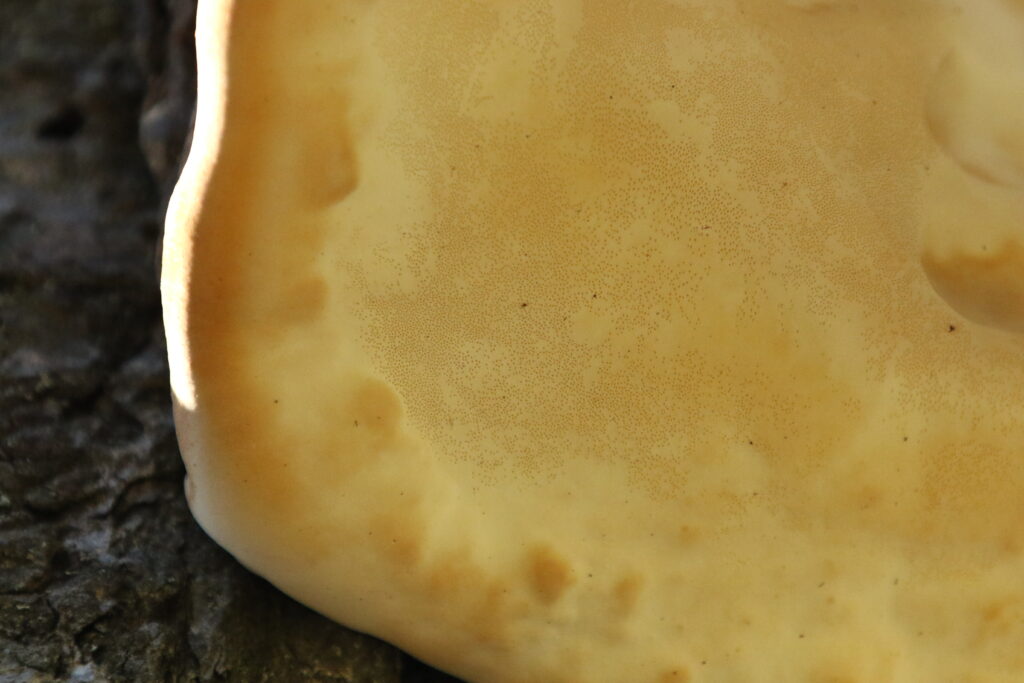Red Belted Conk (Fomitopsis pinicola)

This fungus is a polypore that can be commonly found in southern BC. Named after the red belt of colour between the base of the fungus and the layers of growth above, Fomitopsis pinicola is fairly easy to identify. The cap of the fungus is often more red and might appear to have a slight varnish when young, which develops into a darker and woodier texture as the fungus matures. Polypore mushrooms get their name from the numerous pores on the undersides of the fungus (shown below), unlike the gills of more typical mushrooms. Red Belted Conks are typically saprobic, meaning they break down dead wood. This is an important job, as it ensures nutrients in the dead wood will cycle back into the soil to fuel future generations.

As the Red Belted Conk grows, it adds layers to the main body, forming a stack-like appearance with age. These fungi are perennial and can last for decades. As you can see, this conk found in the park is fairly dark and has many layers, indicating that it has likely been a resident for quite a while! The Red Belted Conk is known to have significant medicinal properties. They are full of compounds which have immune-supporting, anti-inflammatory, and anti-microbial benefits, among others. These mushrooms have been used as anti-inflammatory agent in Korean folk medicine, and as an anti-cancer agent in Chinese folk medicine. Compounds from the Red Belted Conk are being studied to determine the method of action and the specific compounds which might act as potential anti-cancer treatments in a larger medical setting.
Disclaimer: This information is for interest purposes only and we strongly discourage the consumption of any wild mushroom species.
For more information, visit Mushroom Expert, Hearthside Healing, and NCBI.


